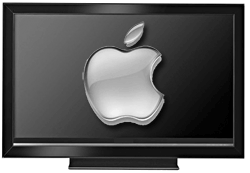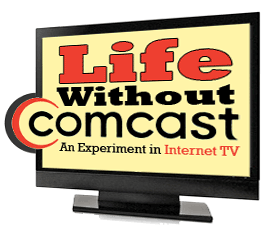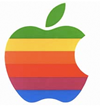 Alas, poor Apple TV. Its manufacturer likes to treat nearly everything it makes as both a technological breakthrough and sales blockbuster, but when it discusses Apple TV at all, it usually dismisses it as a “hobby.” As New TeeVee’s Chris Albrecht points out, the little white set-top box got nary a mention during Apple’s financial conference call yesterday.
Alas, poor Apple TV. Its manufacturer likes to treat nearly everything it makes as both a technological breakthrough and sales blockbuster, but when it discusses Apple TV at all, it usually dismisses it as a “hobby.” As New TeeVee’s Chris Albrecht points out, the little white set-top box got nary a mention during Apple’s financial conference call yesterday.
Apple TV is actually pretty good–I own one and use it with a TV that has no other means of receiving programming–but it’s a nice product in a category that may never change the world in the way that the Mac, iPod, and iPhone have. There just seem to be a limited number of folks out there who want Internet-based entertainment in the living room enough to go through the cost and hassle of installing a box. Apple TV competitors Vudu and Roku–both of which I also like–face the same issue, but as the products of much smaller companies, they presumably can be counted as successes even if sales never explode. Apple, on the other hand, is used to selling its gadgets by the tens of millions.
When you come down to it, though, Apple TV isn’t about being a box: It’s about giving you access to tons of content on your TV. The box itself is an encumbrance, especially if your entertainment center is already as crammed with stuff as mine is. Wouldn’t Apple TV be cooler if it went boxless–by being built into new TVs?
This isn’t a new idea–in fact, it’s one of those persistent Apple rumors that hasn’t come true to date, but might someday. In its usual form, it involves Apple getting into the HDTV biz itself. I’d like to see that happen, but I can think of more reasons why Apple might not want to make TVs than ones why it would. TVs are a commodity; TVs come in too many sizes; TVs wouldn’t give Apple true control over the user experience. (There’s no way the company could completely disintermediate the cable company or mask all of its bad interface decisions.)
But even if Apple doesn’t want to make TVs, it could integrate Apple TV into TVs–by offering the platform as a feature which TV companies can integrate into their sets, in a fashion similar to Yahoo’s cool Internet TV platform. You gotta think that TV manufacturers would jump at the chance to sell an iTunes-ready TV. And when I buy a new HDTV, built-in access to the music and movies I’ve already bought from Apple would be a meaningful selling point.
TV makers might not want to build a hard drive into their sets to accommodate Apple TV, but that’s okay–another unfulfilled Apple rumor involves something called iTunes Replay, which would store your entertainment on a distant server and stream it to your devices on demand. Such as…your TV!
Yes, I know that Apple has a lousy track record when it comes to putting its technology into other companies’ products. (Exhibit A: the Motorola iTunes phone.) But it surely wants to establish an outpost in our living rooms, in a way that goes beyond being a mere hobby. I’m willing to be surprised–and knowing Apple, I probably have this all wrong–but the moment, I can’t think of a more logical way for it to do that than to build the iTunes experience right into our TVs.

 I’ve been remiss in not updating you on my
I’ve been remiss in not updating you on my  Visions of the “digital living room” having been dancing in the heads of industry leaders for over a decade, but no one solution has broken into the mainstream. Now, Apple may be preparing for a significant push based on the success of iTunes and the iPod. Or so predicts analyst Gene Munster of investment bank Piper Jaffray, which thinks that Apple will give it a shot by introducing its own brand of networked television.
Visions of the “digital living room” having been dancing in the heads of industry leaders for over a decade, but no one solution has broken into the mainstream. Now, Apple may be preparing for a significant push based on the success of iTunes and the iPod. Or so predicts analyst Gene Munster of investment bank Piper Jaffray, which thinks that Apple will give it a shot by introducing its own brand of networked television. Way back in January of last year, Sling Media–the inventors of the nifty SlingBox box, which can broadcast TV from your home across the Net to your laptop or phone–
Way back in January of last year, Sling Media–the inventors of the nifty SlingBox box, which can broadcast TV from your home across the Net to your laptop or phone–